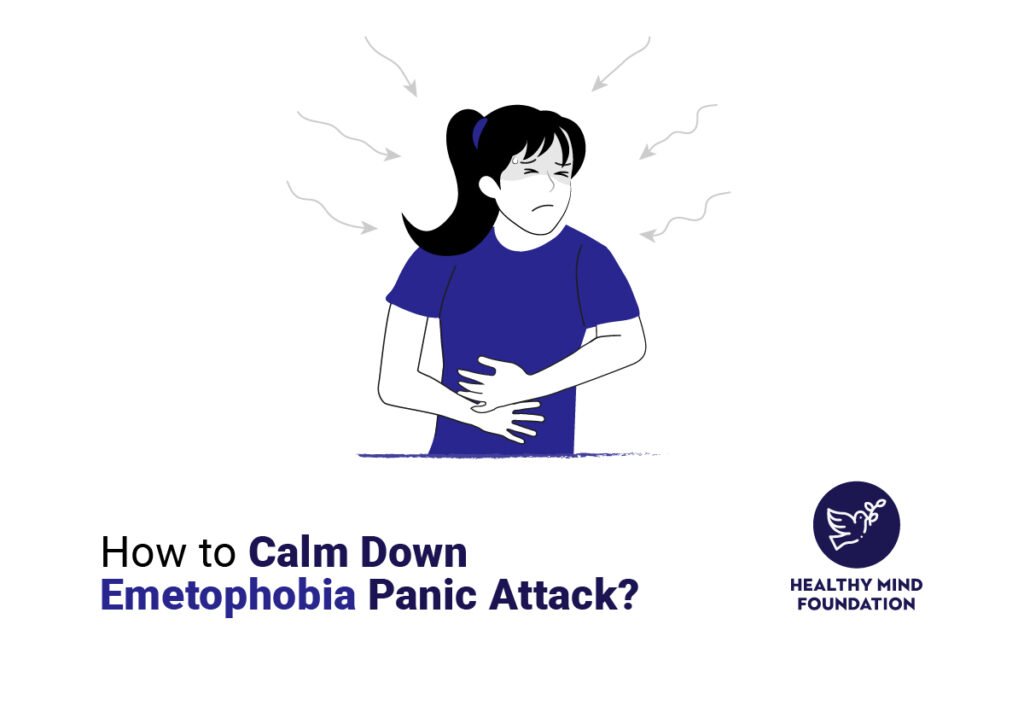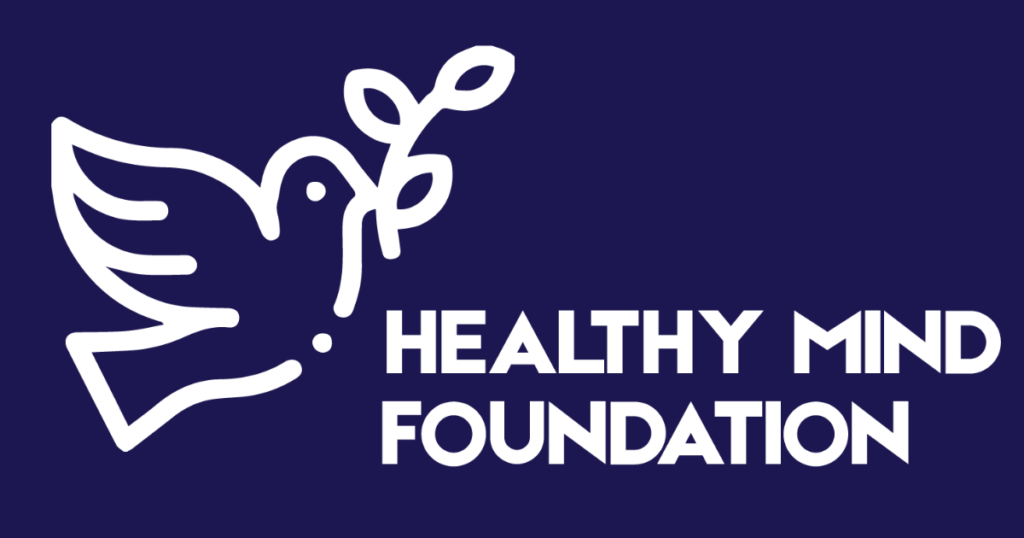Welcome to our guide on how to calm down emetophobia panic attack.
Emetophobia is the intense fear of vomiting. It causes overwhelming panic attacks that are disruptive to everyday life.
Our post explains what emetophobia is, its symptoms, its causes, and most important of all how you can find relief from it.
Let’s find ways to calm your mind and ease the fear that grips you.
What are Emetophobia Panic Attacks?
These panic attacks are intense feelings of fear induced by the thought or presence of vomiting.
Being aware of triggers such as seeing someone else being sick or feeling nauseated oneself is an important part of managing these episodes.
Signs and Symptoms
- Rapid breathing or shortness of breath.
- A crippling dread of falling ill.
- Sweating and trembling.
- Dizzy spells.
- Extreme anxiety or fear.
- Gastrointestinal distress.
- Dizziness or lightheadedness.
- A rise in heart rate.
Triggers and Causes
- Sight or smell of vomit.
- Auditory stimuli – throwing up sound.
- Seeing someone else vomiting.
- Nausea or stomach pain.
- Certain foods or medications.
- Situations where escape is difficult.
The causes can be anything from past traumatic experiences to genetic predisposition to anxiety disorders.
How to Calm Down Emetophobia Panic Attack?
How to cope with emetophobia? When experiencing emetophobia, calming a panic attack is essential to feeling calmer.
If you’re caught amid such an episode, here are immediate steps to calm your emotions and body’s reaction:
1. Focus on grounding yourself in the present.
Use grounding techniques, like the 5-4-3-2-1 method.
- Look for 5 things you can see around you and name them.
- Listen for 4 sounds in your surroundings. Recognize these sounds.
- Notice 3 things you can feel. It can be the fabric of your clothes or your breath.
- List 2 things you can smell, either pleasant or unpleasant.
- Name 1 thing you can taste.
2. Controlled breathing.
Take a moment to practice the 4-7-8 technique.
Inhale deeply for 4 seconds, hold your breath for 7 seconds, and exhale slowly for 8 seconds.
This is a way to ease hyperventilation and calm you down.
3. Visualization techniques.
In many cases, picturing a peaceful place or memory calms the panic attacks associated with emetophobia.
Here are a few methods you can try:
- Beach visualization. Close your eyes and imagine yourself on a calm beach you’re feeling the warmth of the sun on your skin, and listening to the gentle sound of waves.
- Safe place visualization. Think of a place that is safe and comfortable for you. It could be a cozy room in your home or a quiet/peaceful spot in nature. When you feel anxious, visualize yourself there and concentrate on the details.
4. Gentle Distraction.
Try doing something that engages your attention but does not exhaust you mentally.
It could be knitting, or listening to comforting music.
5. Reach out for help.
If your panic does not subside, or you need immediate help, please turn to a loved one, a support group member, or your therapist (if accessible).
Using these strategies can help you figure out how to calm down emetophobia attack.
Self-Care Practices for Emetophobia Management
- Find relaxation methods that work for you. Find what genuinely relaxes you if it’s taking walks, having a warm bath, an enjoyable hobby, or practicing yoga or mindfulness, and do it every day to stay calm.
- Improve your stress management skills. Learn time management or organizational skills to ease general life stresses that might worsen your emetophobia.
- Track your triggers. Keep a diary to write down circumstances or foods that could trigger anxiety or discomfort, so you can avoid them.
- Make sure you stay informed. Read up on emetophobia to understand it more, as this will clarify concerns and help you feel less anxious.
- Don’t overindulge in caffeine and alcohol. Neither substance is good for your digestion or anxiety levels, so try to limit your consumption.
- Hydration is essential. A well-hydrated body can prevent the onset of symptoms of emetophobia.
- Sleep well. Quality sleep is essential for managing stress and anxiety. Set up a calming bedtime routine so you can sleep better.
- Review your medications. Consult with your provider about any medications that could be adding to nausea or emetophobia symptoms.
- Use positive affirmations. By repeating affirmations to yourself, you’re able to increase your coping skills and bring yourself into a more positive frame of mind.
Getting Professional Help
If emetophobia is severely affecting how you live, you must get help from a mental health professional experienced in phobias and anxiety disorders.
Professional help usually begins with a comprehensive emetophobia test to assess the severity and effects of phobia on you and your daily routine.
With a thorough understanding of emetophobia and OCD or other related anxiety disorders, a therapist can devise a custom treatment plan.
The treatment plan can include talk therapy, CBT, and coping strategies that work for you.
Cognitive behavioral therapy can change thought patterns that cause emetophobic anxiety.
As a part of CBT, emetophobia exposure therapy can help as well. It involves gradually exposing yourself to fear-invoking stimuli to diminish the phobic response.
Finding Emetophobia Therapy Near Me
For those seeking professional assistance, localized web searches such as ‘emetophobia therapy near me’ or ‘emetophobia therapists near me’ will help you find specialists in your area.
It would be beneficial to look into therapists who understand the emetophobia severity scale.
Healthy Mind Foundation provides both in-person and telehealth care. Please consider getting in touch with us if you need emetophobia treatment or therapy.
Final Insights
How to calm down emetophobia panic attack?
Self-assistance measures, like deep breathing and grounding exercises, can serve as immediate relief during panic attacks — especially for phobia throwing up.
Long-term relief, though, could require expert-led strategies, for instance, cognitive-behavioral therapy and possible exposure therapy sessions.
With the appropriate strategies, treatments, and support, people can learn to manage their panic attacks and fully live their lives.
If you’re sick of struggling with emetophobia, know that there is help out there.
Please reach out to us today at Healthy Mind Foundation for more information about our services.
FAQs
Is emetophobia OCD?
Emetophobia is commonly experienced as a standalone phobia, but it can also be a symptom of OCD.
When emetophobia is present in OCD, it is caused by excessive, unwarranted fears about vomiting causing obsessive thoughts and compulsive behaviors aimed at preventing it.
Can crying to the point of throwing up indicate a phobia?
There is no indication that crying to the point of vomiting is a sign of a specific phobia, but it could indicate mental distress.
Can crying make you throw up?
Yes, there are times when excessive crying can cause gagging or vomiting.
This is because of the body’s physical response to intense emotions or because you swallow a lot of air when you’re sobbing.
‘Autism emetophobia’ is there a connection?
Yes, there can be a connection between autism and emetophobia, since autism can make people more sensitive to distressing stimuli, like vomiting.
What does it mean when you dream about throwing up?
Throwing up in dreams can have various meanings, but usually represents letting go of negative emotions or stress.
It is not directly associated with emetophobia unless the fear of vomiting is present in your waking life.
How to manage anxiety after stomach bug?
To manage anxiety following a stomach bug, one should:
- Get back to normal activities slowly.
- Make sure you drink enough water.
- Keep your diet mild to ease the digestive system.
- Deep breathing exercises, mindfulness, or gentle yoga can also help calm the mind.


